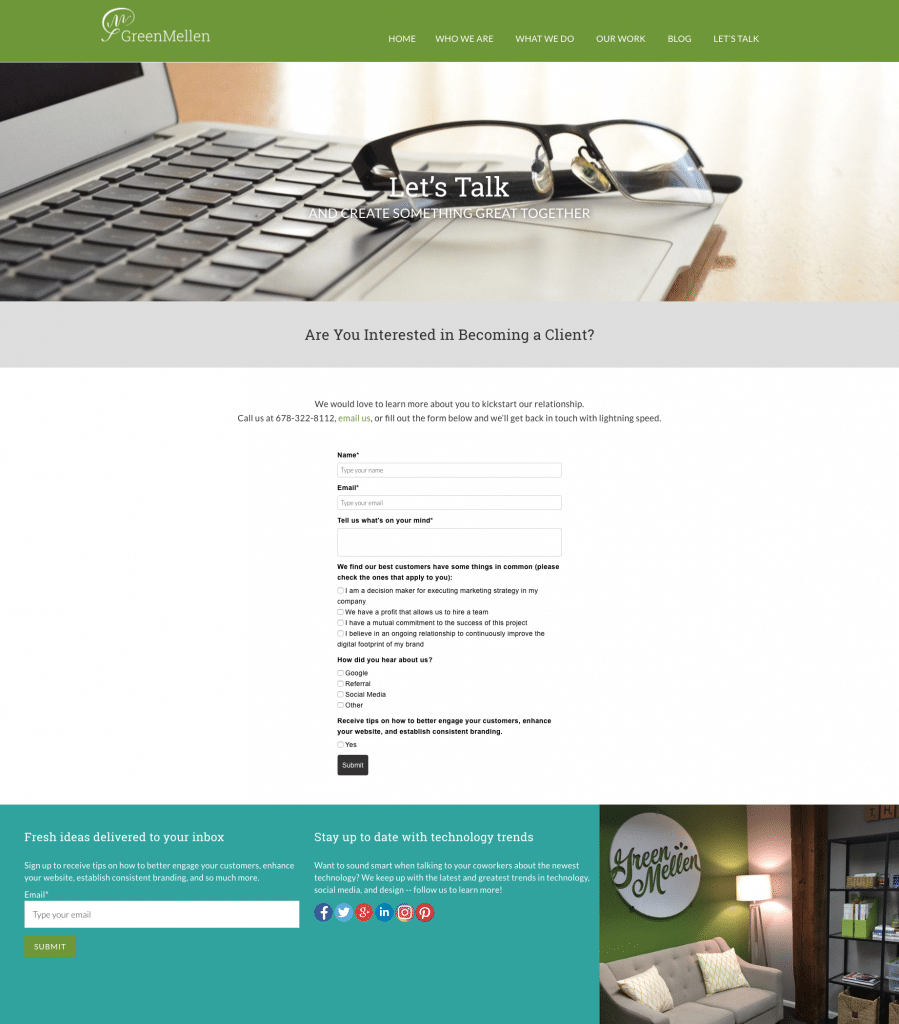When you think about improving specific web pages on your website, your mind might wander toward tweaking the homepage, product/service pages, or even your blog. However, did you know that the contact page can be strategically designed to ease the process for visitors to ask a question, maximize the chance your website visitors will contact you, and streamline communication with your visitors?
Contact pages cannot be an afterthought; you’ll either end up getting overwhelmed with the same questions, spend too much time prioritizing your requests or never receive any inquiries from visitors. It sounds silly to say, as a contact page is already pretty self-explanatory already. However, as one of your most visited pages, it’s something worth spending time on.
Keep these tips in mind when planning out or redesigning your contact page.
Contact Form Tips
It’s no secret that most contact pages include a form for visitors to ask their questions or get more insight into your business. When creating the form for your contact page, use fields that will both help your business understand who is contacting you and allow your visitor to give you all the information you need before reaching out. Try not to overwhelm them with a lot of fields to complete, or they could lose interest and leave your website.
Lastly, add some text next to your form to explain why they would be reaching out to you in the form. For example, our contact page says, “Are you interested in becoming a client? We would love to learn more about you to kickstart our relationship.”

As you can see, we want to hear from businesses who need help with their website or digital marketing. All in all, keep it simple and direct when it comes to your form.
Include Other Ways to Reach You
This point might be a given, but while it’s nice to give your visitors the chance to fill out a form, your contact page should also include other ways for them to get in touch with you. After all, it’s called the contact page, not the “fill out my form, and we’ll go from there” page.
Phone numbers, email addresses, and social media icons are some examples of other outlets where visitors can get in touch with you. The reason will vary as to why they would not want to contact you through your form, but as long as you provide them with a variety of ways to reach you, you’ll see more success in interaction.
Link the “Submit” Button to a Thank You Page
Once someone has filled out your form, they should be redirected to a thank you page. Sending visitors to a thank you page will not only confirm that you have received their submission but also explain how and when you’ll be in touch with the visitor. You could also send them a confirmation email to give even more verification.
Organizing Contact Emails
Now that your contact page has been perfected, take it an extra step and create a system to organize your form submissions. To avoid a ton of clutter in your inbox, set up a rule that sends these submissions to a specific folder.
Depending on your business, you may get a lot of inquiries or inquiries that are more timely than others. This could make it difficult to prioritize what you need to focus on first, so it’s wise to add a drop-down list to your form titled, “Reason for Inquiry.” Most WordPress form plugins allow you to create this type of field and will enable you to edit the subject line to include the reason the visitor is contacting you. By taking this extra step, you can streamline your contact form response process.
Don’t let your website’s contact page be an afterthought. If you need some inspiration with your contact page, check out ours or reach out to us with any questions you may have!





